Day 2. Lungwa Village, Mon district, Nagaland.
I woke up at 5.00a.m. Sunlight crept in through every nook and cranny of the shuttered window in my room. The constant crowing of the hens and the laughter of children drifted in, forcing me to get up. I emerged from my room dressed to explore the village.
Lungwa village seems unmoored from the mainland, and the only presence of the Indian government is a thin metalled road that runs straight through the village, narrow enough for a single car. The borders of India and Myanmar were drawn blindly cleaving this community into two, with the line of the border dividing the Angh’s (the king) long house into two. Naturally, the villagers of Lungwa are dismissive of India and Indians, and pay no heed to the imagined entities that separate them (identifying themselves as Nagas instead).
I explored Longsha’s house by the light of day. A huge log drum with a tiger’s head carved from a massive hollowed-out log sat at the entrance of the house. I learnt that it had been in the family for generations. Two wooden sticks were used to beat out messages during any important event. The bamboo walls at the entrance were festooned with skulls of buffalo, mithun, wild boar, deer, monkey, bear and many other animals. The ancestral house was a massive circular structure built of wood, bamboo, palm leaf and cane thatching. The heavy front door, also made of wood, was carved with hunting scenes and village life. It opened out into the main hall. The inside was cavernous, with carved wooden pillars reaching up to the roof, resembling the underbelly of a massive ship. Daylight streamed in through open skylights and I looked around the room in wonder and amazement. All along the walls of this main hall were strung hunting bags and satchels made of bamboo and leather, decorated with carved wooden heads, animal horns, feathers, beads and of course ubiquitous animal skulls.
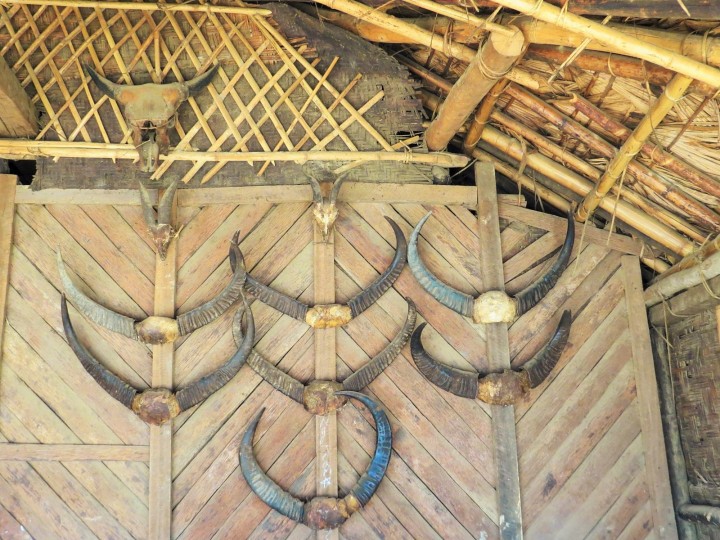
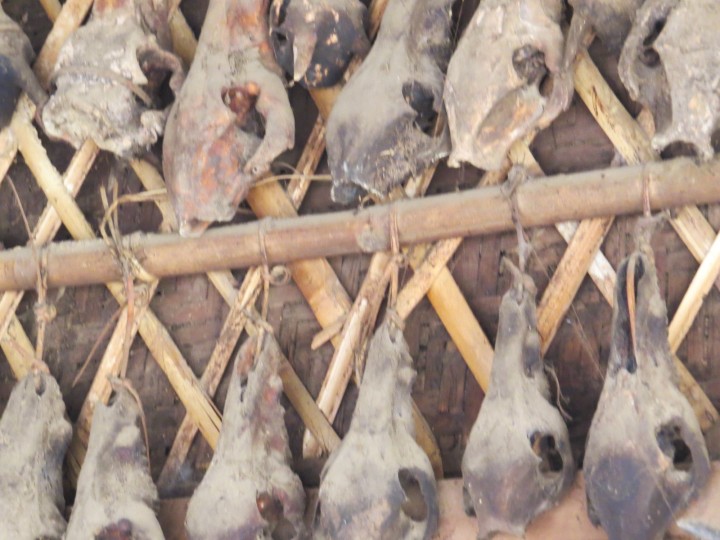

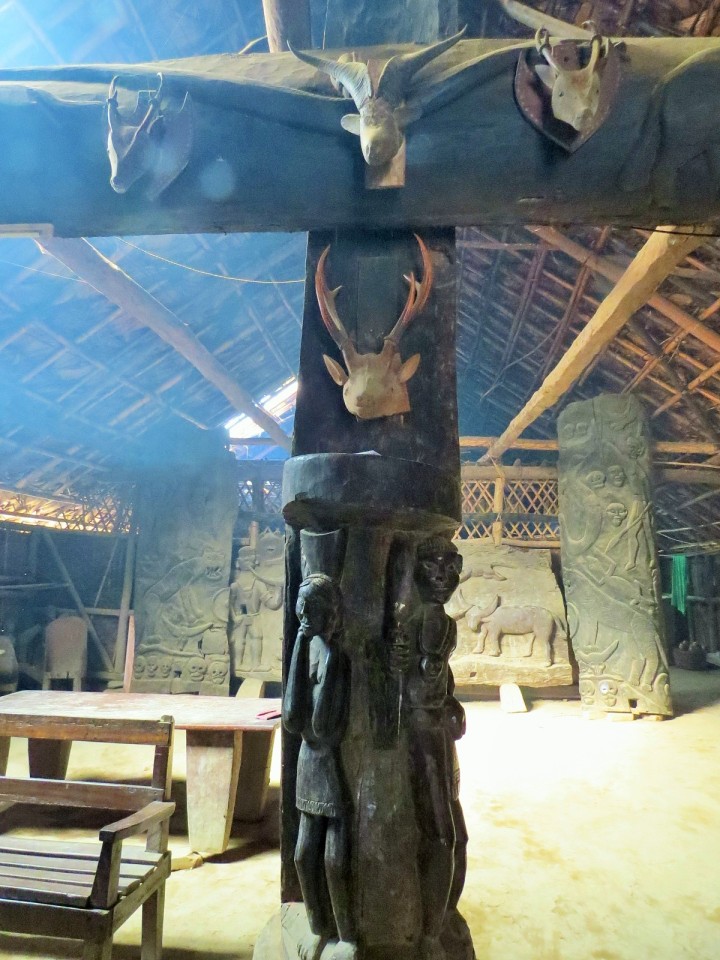

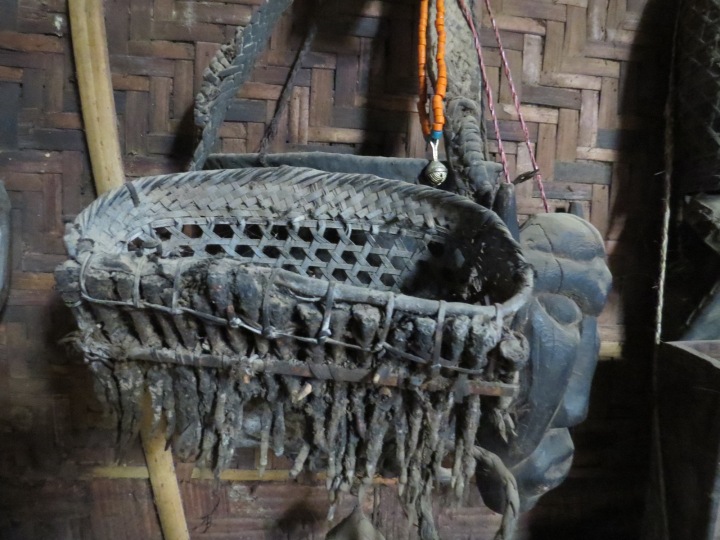
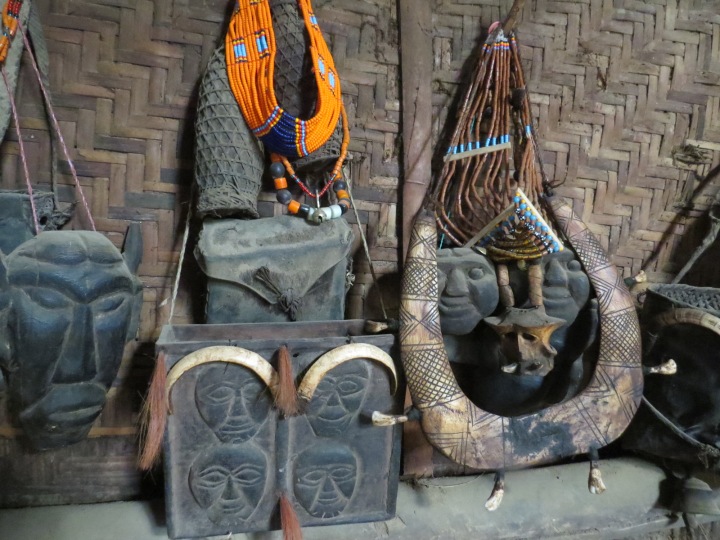
The middle room of the house was where the women and children lived. Again, the only source of light was from the open skylight. The central fireplace which was sunk into the floor, had two iron bars across it. On this makeshift rack over the flames various metal pots and kettles were placed and removed throughout the day. If one looked above one could see a low hanging frame of bamboo rafters where everything from meat, hides, wooden logs were smoking and drying. From the ceiling hung ears of corn left out to dry. The walls had small bamboo logs hanging, the hollow insides were again used as storage. Simple utensils, simple warm and friendly people.
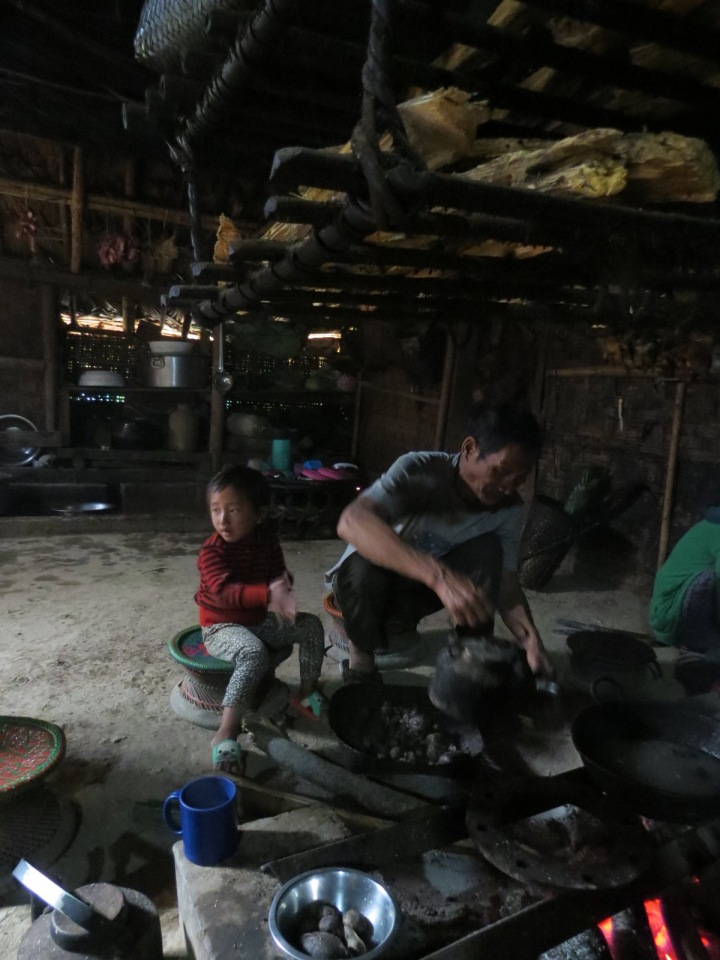
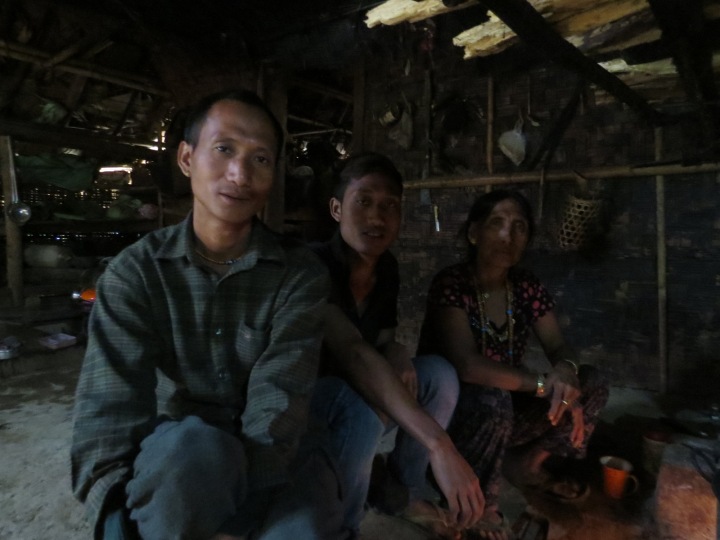


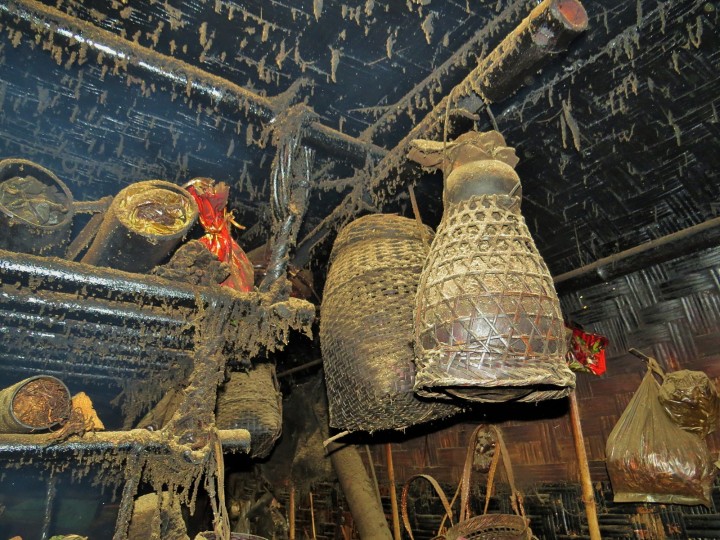

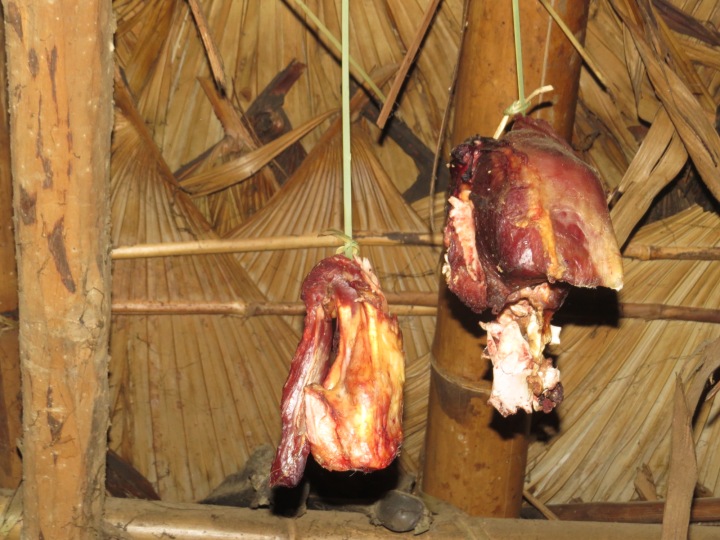

Beyond this family room was the parent’s room. Here there was no skylight and it was pitch dark. I noticed that the family felt no necessity to build shelves and wardrobes, their simple possessions were all hung on the walls. The absence of light also told me that their eyesight was many times sharper than mine. I only managed to make out what was in the room after I clicked some photographs using the flash.
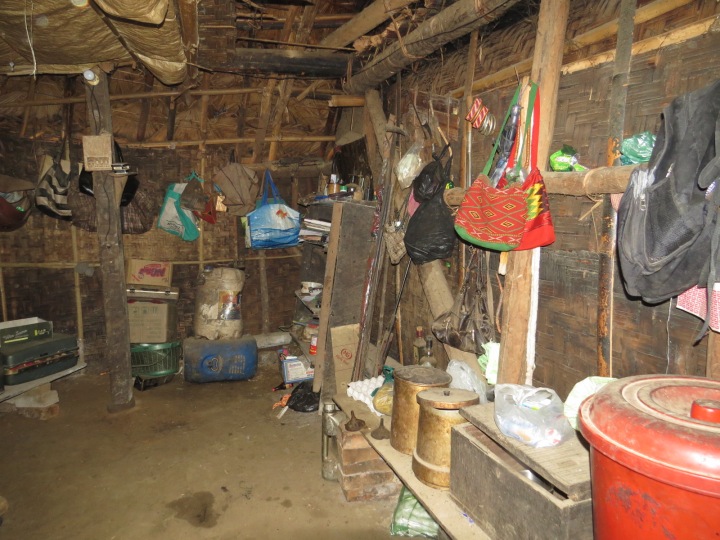
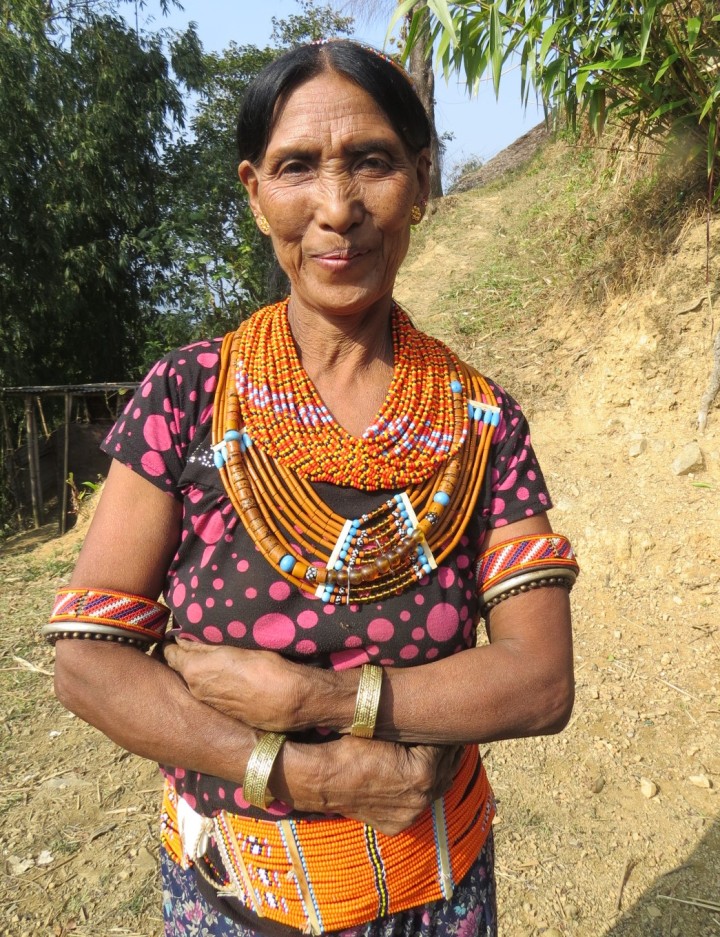
We were headed to pay our respects to the Angh, the king of the village, as part of the protocol for any new visitor to the village. I was eager to see the Angh’s house, the most important house in the village cleaved into two by a nation’s borders. It was said that the Angh dined in India but slept in Myanmar. As we approached the site, Longsha told me that a recent storm had totally destroyed the Angh’s house and it was being rebuilt by the villagers on the same spot. Stone menhirs, carved wooden pillars and a ceremonial tree remained at the site. This was the area where the jubilant Konyak warrior/headhunter would display the decapitated head of the enemy and win accolades from the entire village.We entered a dark log hut which was nowadays being used for meetings, it was part of the Angh’s quarters. I was greeted by a circle of men seated around a fire.
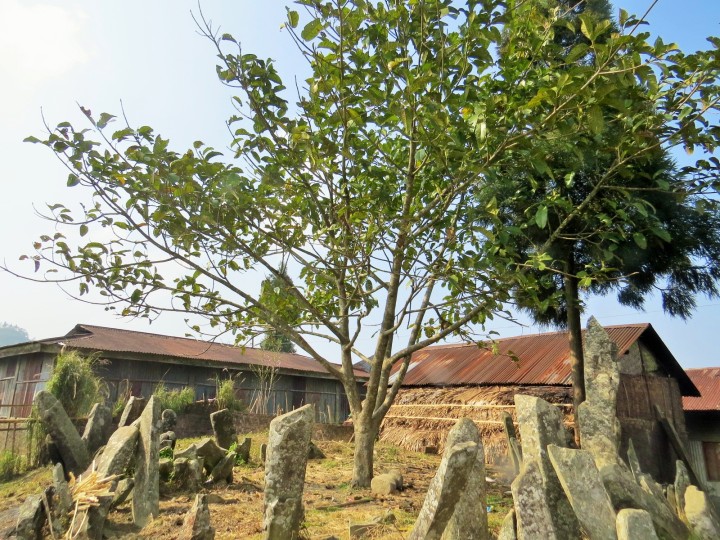
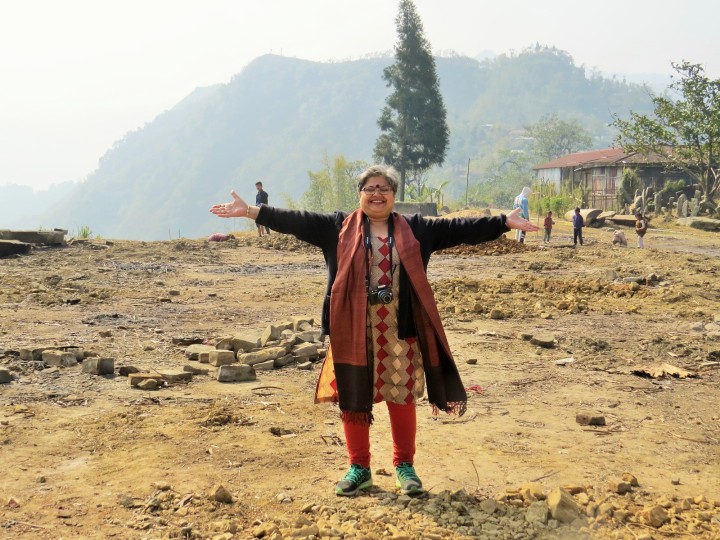
The Angh, 42 year old To Nyei, stood out amongst them with his aquiline, noble features. He nodded at me and gestured for me to sit down; there was a tone of astonishment at my appearance. Longsha explained that the villagers had only met young foreign women, but never someone like me – a married woman over fifty, and travelling alone to boot. He had eight wives (concubines) but one queen. I came to know that his queen, Khaonyu, had borne four daughters but no sons, so the villagers were urging him to marry again. I met his eldest daughter, a self-assured young teenager, who would soon marry the chief of a neighbouring village and become his queen. (It was confided in me that previous Angh apparently had sixty wives, and died at 57 from drinking too much)
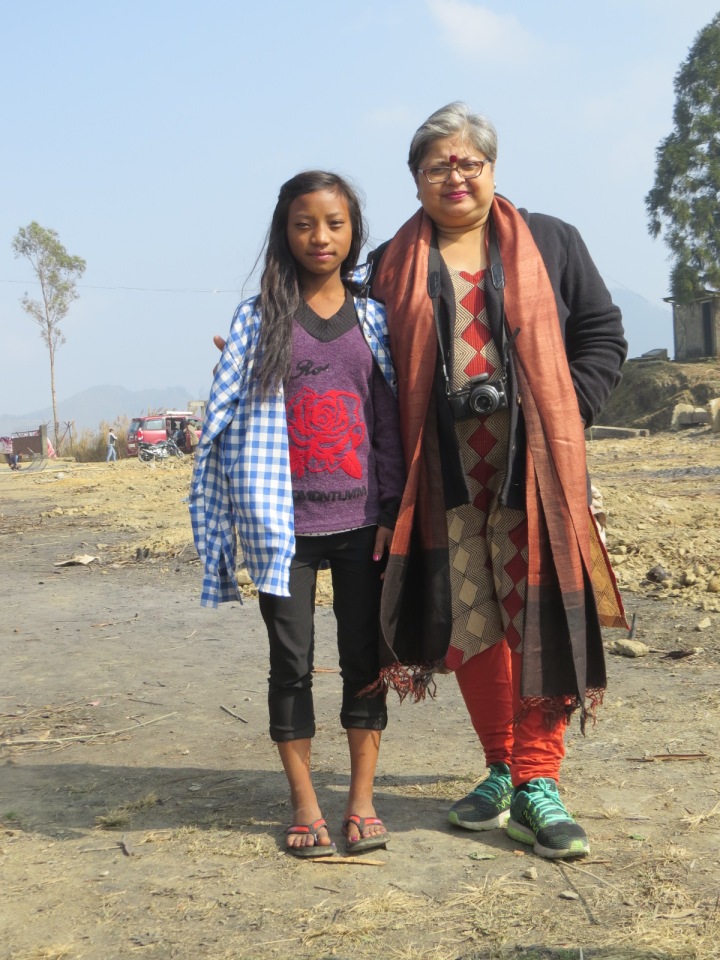
A red plastic chair was offered to me and I sat down, scarcely blinking an eye. I was offered black tea, and encouraged to watch as the men prepared an opium pipe. Fascinated, I watched the next scene unfold. It looked like something straight out of a period movie. One of the men first took out an inch wide piece of cloth smeared with opium and put it in the ladle. He poured some water over it from an enamelled cup (the likes of which I last saw being used in the seventies)and held the ladle over the fire. When the water started bubbling, the cloth was removed with a pair of long black pincers. Soon all the water evaporated leaving behind a brown coating of pure opium paste on the ladle. The man took out some dried palm fibre, scrunched it into a small ball and patiently rolled it over the residual opium left in the ladle. The mixture of rolled up-opium-smeared-leaf fibre was packed into the neck of a carved wooden pipe. Another man held a piece of red hot charcoal to the opium in the neck and the Angh graciously took the pipe and inhaled a deep lungful of smoke.
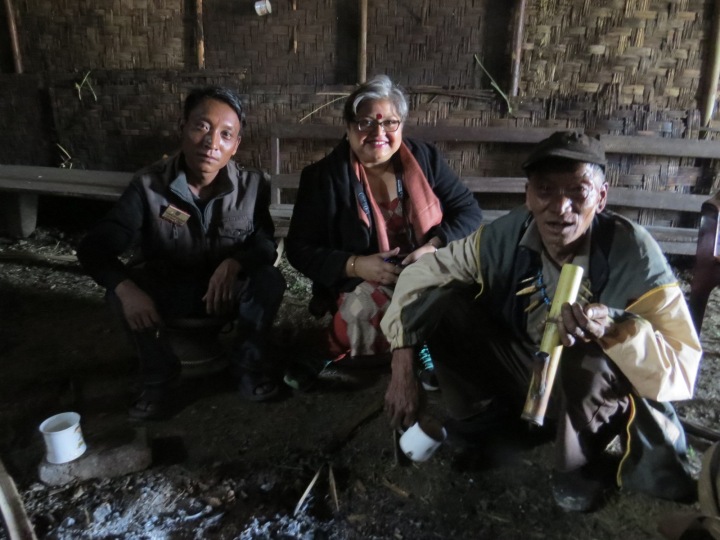
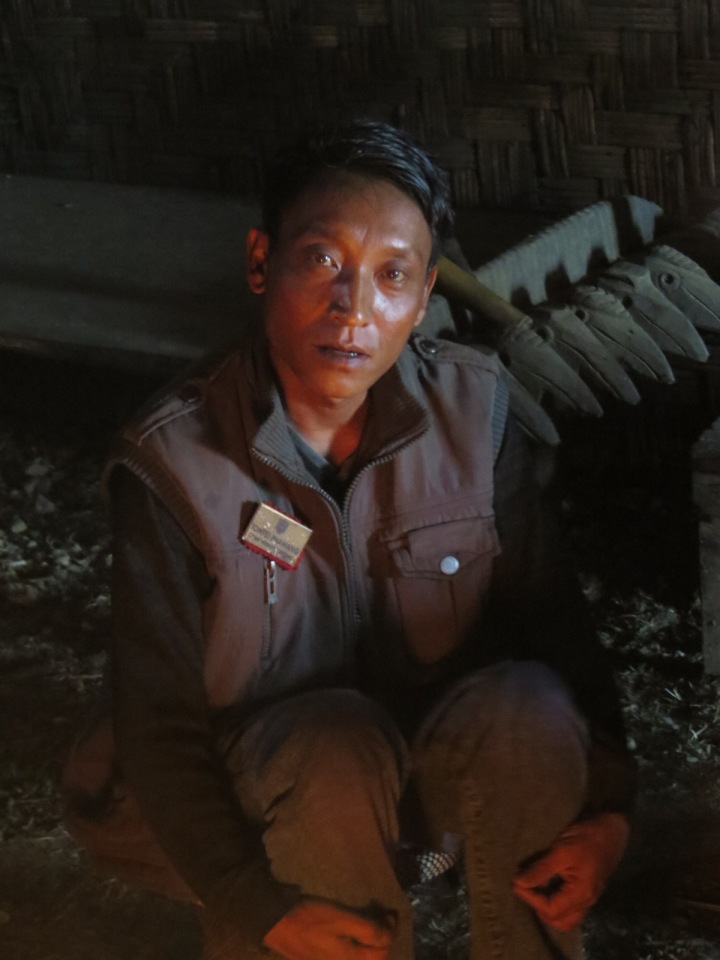
The Angh, 42 year old To Nyei.


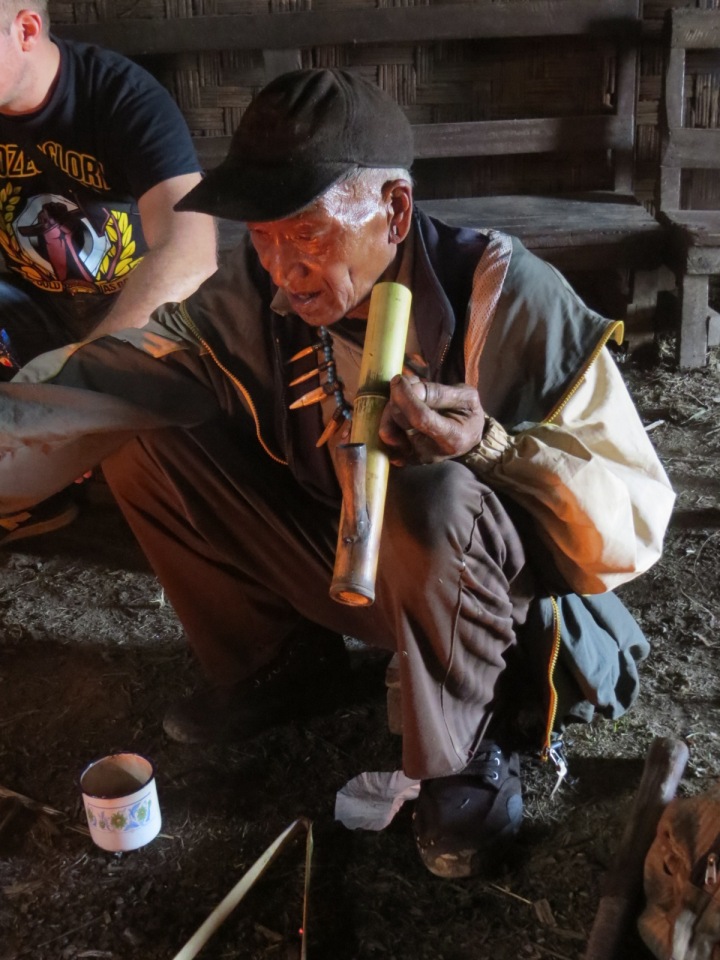

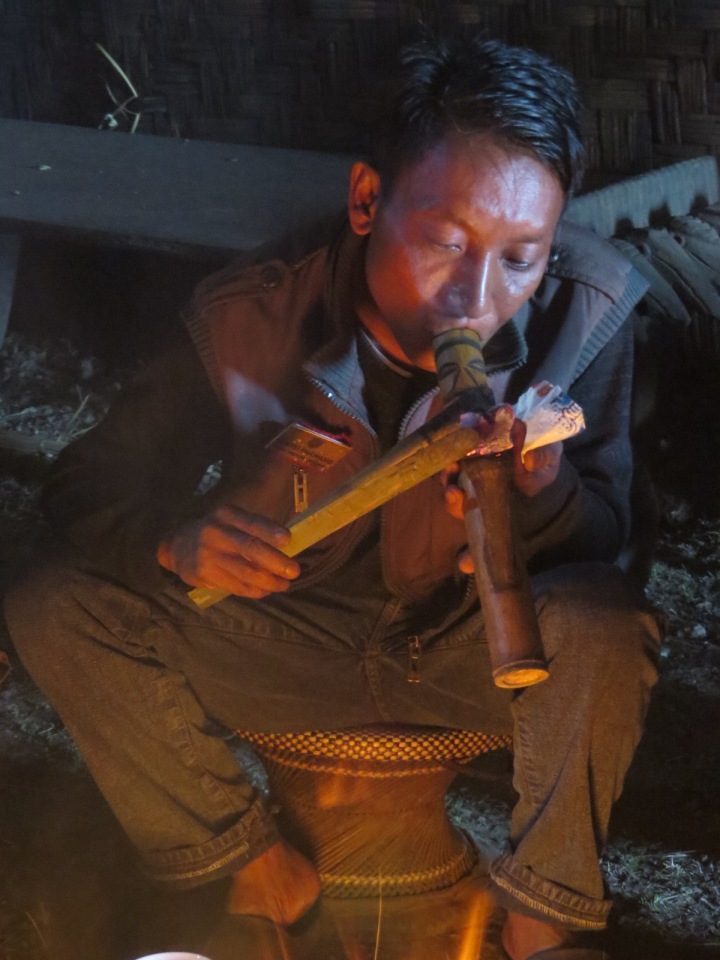
Another pipe was soon made, refilled and passed around the room, and soon the longhouse filled with a cloud of thick smoke.
The Angh opened his eyes and smiled at me.

Fantastic sumita. i wonder how u got the idea n courage to travel to such a place alone. 👌 thanks for the write up….so vivid . Great description
LikeLiked by 1 person
Thanks a lot, glad you enjoyed reading it.
LikeLike
Thoroughly enjoyed the trip through your vivid description. You have such a gift ! The angh is quite handsome. How do you remember so many names of things, people…
LikeLiked by 1 person
Thanks and I’m glad you liked the post. This time I carried a small note book and jotted down everything people were saying. Language was a huge barrier. The only way I could communicate was through Longsha, who spoke broken English.
LikeLike
Just WoW!! Meticulous write-up and those pics you captured are epic!
LikeLiked by 1 person
Thanks. It’s so encouraging to read appreciation by a fellow blogger. 🙂
LikeLike